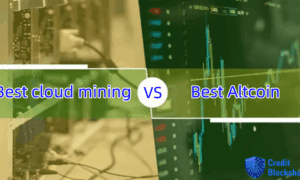Introduction:
In the realm of technological innovation, few developments have been as groundbreaking as the evolution of blockchain. What began as the foundation for the cryptocurrency Bitcoin has now transformed into a versatile technology with applications far beyond the realms of digital currencies. This article delves into the fascinating journey of blockchain, tracing its evolution from the pioneering days of Bitcoin to the sophisticated realm of smart contracts.
The Birth of Bitcoin and Blockchain:
The story commences with the introduction of Bitcoin in 2009 by an individual or group using the pseudonym Satoshi Nakamoto. Bitcoin, the first decentralized cryptocurrency, sought to revolutionize the financial landscape by offering a peer-to-peer electronic cash system. At its core was the underlying technology known as blockchain, a distributed ledger that records transactions across a network of computers.
Blockchain’s early days were synonymous with Bitcoin, as it served as the backbone of the cryptocurrency. Each block in the chain contained a list of transactions, and the blocks were linked through cryptographic hashes, ensuring the integrity and immutability of the data. This transparent and secure system marked the beginning of blockchain’s journey.
The Rise of Altcoins and Forks:
As Bitcoin gained traction, alternative cryptocurrencies, or altcoins, emerged, each seeking to address specific limitations of the original blockchain. Litecoin, introduced in 2011, aimed for faster transaction confirmation times, while Ethereum, launched in 2015, introduced the concept of smart contracts. These developments signaled a diversification in the blockchain landscape, showcasing its adaptability to various use cases.
Forks, or changes to the underlying code of a blockchain, became pivotal in the evolution of blockchain technology. Notable forks, such as Bitcoin Cash and Ethereum Classic, reflected debates within the community about scalability, governance, and ideological differences. These forks not only contributed to the resilience of blockchain but also sparked discussions on how to address the challenges associated with its growth.
Smart Contracts:
A Game-Changing Innovation:
The most significant leap in the evolution of blockchain came with the introduction of smart contracts on the Ethereum platform. Smart contracts are self-executing contracts with the terms directly written into code. They automatically execute when predefined conditions are met, eliminating the need for intermediaries and streamlining complex processes across various industries.
Smart contracts opened new possibilities, enabling developers to create decentralized applications (DApps) on the Ethereum blockchain. These applications spanned a wide array of industries, from finance and supply chain to gaming and healthcare. The programmability of smart contracts empowered developers to build decentralized solutions that were transparent, secure, and efficient.
Interoperability and Blockchain Consortia:
As the blockchain ecosystem expanded, the need for interoperability between different blockchain networks became apparent. Various blockchain consortia and initiatives, such as Hyperledger and the Enterprise Ethereum Alliance, aimed to create standards that would facilitate seamless communication and collaboration between diverse blockchain platforms. Interoperability marked a crucial step towards realizing the full potential of blockchain on a global scale.
Integration with Traditional Industries:
Blockchain’s evolution also witnessed increased integration with traditional industries. In finance, blockchain is disrupting the traditional banking system through decentralized finance (DeFi) platforms. These platforms offer services such as lending, borrowing, and trading without the need for traditional intermediaries, providing users with greater financial autonomy.
Supply chain management is another sector experiencing a transformative impact. Blockchain enhances transparency and traceability, allowing stakeholders to track the journey of products from manufacturing to distribution. This not only minimizes fraud and errors but also fosters consumer trust by providing real-time information on the origin and authenticity of goods.
Challenges and Scalability Concerns:
Despite its remarkable evolution, blockchain faces challenges that warrant consideration. Scalability remains a persistent issue, particularly as blockchain networks strive to accommodate a growing number of transactions. High transaction costs and slow confirmation times have prompted ongoing discussions and innovations aimed at addressing these limitations.
Regulatory uncertainties also pose challenges to the widespread adoption of blockchain technology. Governments around the world are grappling with the regulatory framework for cryptocurrencies, ICOs (Initial Coin Offerings), and blockchain applications. Striking a balance between innovation and regulatory compliance is essential for the continued evolution and acceptance of blockchain technology.
The Future:
Beyond Cryptocurrencies:
Looking ahead, the future of blockchain appears promising and extends beyond the realm of cryptocurrencies. The technology continues to evolve, with advancements such as sharding and layer 2 solutions aiming to enhance scalability. Integration with emerging technologies like artificial intelligence and the Internet of Things (IoT) further expands the potential applications of blockchain.
Conclusion:
The evolution of blockchain from Bitcoin to smart contracts represents a remarkable journey marked by innovation, diversification, and integration with traditional industries. The technology’s ability to adapt and address challenges has fueled its growth, with smart contracts emerging as a game-changing development. As blockchain continues to evolve, it is poised to reshape industries, streamline processes, and redefine the way we interact with digital systems. The journey from Bitcoin to smart contracts is just the beginning, and the future promises even more transformative possibilities for this revolutionary technology.

































